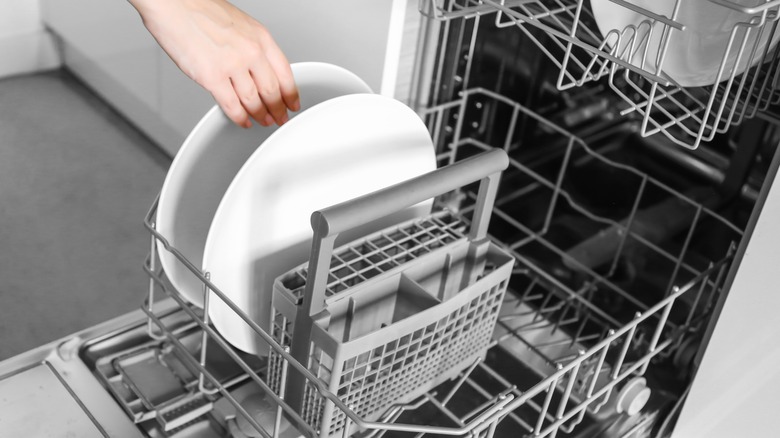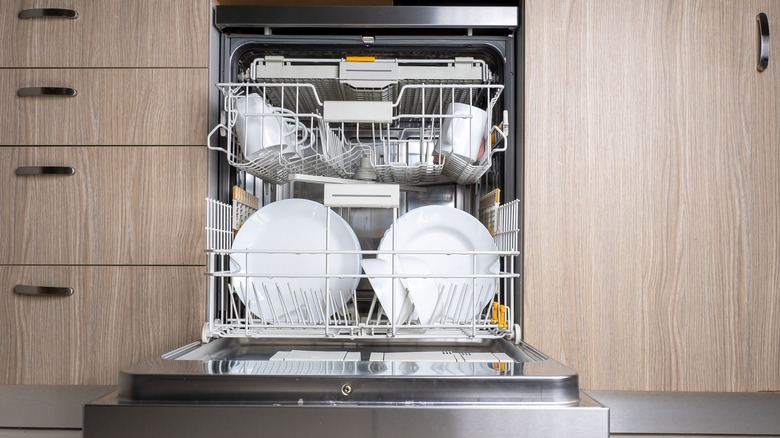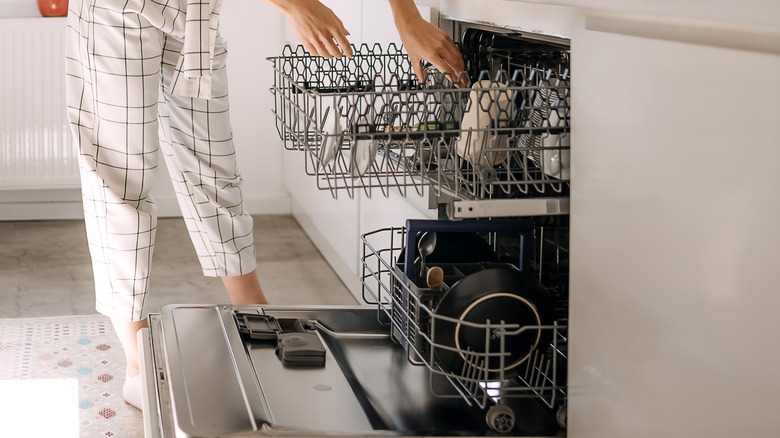The Dishwasher Mistake That Prevents Dishes From Getting Clean
The dishwasher might be one of the best modern inventions, and these days, they are designed to use as little water as possible, making many newer models more eco-friendly than hand-washing the dishes. But the whole point of using the dishwasher is to ensure the dishes are free from food and bacteria, which means they have to be loaded properly to ensure efficient cleaning. If you're mistakenly loading your dishes too closely together, you could prevent them from adequately getting cleaned.
Some might have different opinions on how to load a dishwasher properly, but the various plastic separators on the top and bottom racks help guide you on how to place the dishes to make sure there is enough space for water to pass on all sides. If you stuff too many things in there at once, you might think you're saving time, but you are actually just preventing a proper cleaning.
How to properly load the dishwasher
Yes, there is a right way to load the dishwasher, at least when it comes to where to put certain things and how much space to leave. Whirlpool even has an efficient dishwashing diagram; the appliance giant says there should be space between every single dish, but only just enough for the jets to pass water through. A lack of space not only prevents cleaning but can also lead to clogs and leaks because the water can't spray efficiently. Those random sticks throughout the dishwasher aren't for decoration; they're called tines, and there should only be one dish in between each tine separation.
Another important aspect of loading the dishes is the angle matters. When placing them between the tines, angle the dishes so they face down. This helps the water adequately spray all parts of the dish and also helps the dishes dry during the drying cycle. When the dishes are properly angled and correctly placed between the tines, there is a much lower chance they will hit each other and break during the cleaning process, too.
Top and bottom dishwasher racks are not created equally
Most dishwashers have a top and bottom rack, but they function differently. Still, one thing remains the same: The tines are your friend. Place glasses, mugs, and small bowls on the top rack; small plates can also go here and should be angled downward. Though it's best to place everything between the tines, large bowls or colanders might need to be placed over them because of their size.
The bottom rack is for larger dishes, but it's also the place for other large bowls and cookware. These latter items should go on the sides of the dishwasher rack so as not to interfere with the cleaning process for the dishes. And, of course, silverware goes in the designated silverware space.
Loading a dishwasher is fairly easy, but if there is one thing you learn from it, it's to avoid stacking those plates to ensure your dishes are sparkling and clean.


